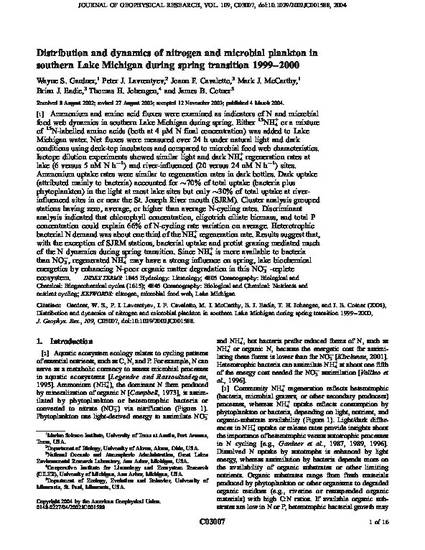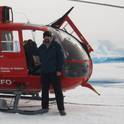
[ 1] Ammonium and amino acid fluxes were examined as indicators of N and microbial food web dynamics in southern Lake Michigan during spring. Either (NH4+)-N-15 or a mixture of N-15-labelled amino acids (both at 4 muM N final concentration) was added to Lake Michigan water. Net fluxes were measured over 24 h under natural light and dark conditions using deck-top incubators and compared to microbial food web characteristics. Isotope dilution experiments showed similar light and dark NH4+ regeneration rates at lake ( 6 versus 5 nM N h(-1)) and river-influenced ( 20 versus 24 nM N h(-1)) sites. Ammonium uptake rates were similar to regeneration rates in dark bottles. Dark uptake ( attributed mainly to bacteria) accounted for -70% of total uptake ( bacteria plus phytoplankton) in the light at most lake sites but only -30% of total uptake at river-influenced sites in or near the St. Joseph River mouth (SJRM). Cluster analysis grouped stations having zero, average, or higher than average N-cycling rates. Discriminant analysis indicated that chlorophyll concentration, oligotrich ciliate biomass, and total P concentration could explain 66% of N-cycling rate variation on average. Heterotrophic bacterial N demand was about one third of the NH4+ regeneration rate. Results suggest that, with the exception of SJRM stations, bacterial uptake and protist grazing mediated much of the N dynamics during spring transition. Since NH4+ is more available to bacteria than NO3-, regenerated NH4+ may have a strong influence on spring, lake biochemical energetics by enhancing N-poor organic matter degradation in this NO3--replete ecosystem.
Available at: http://works.bepress.com/peter_lavrentyev/3/
